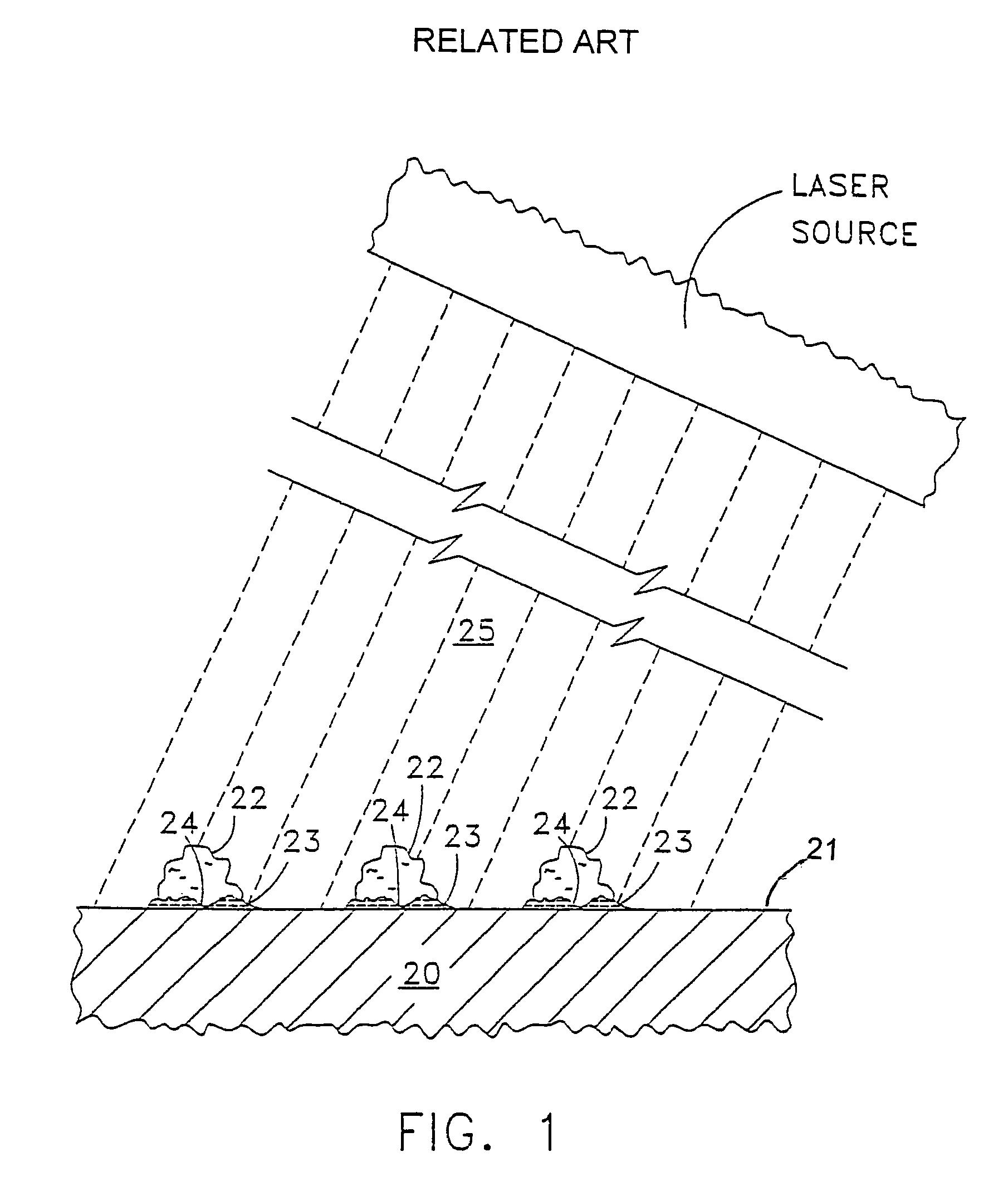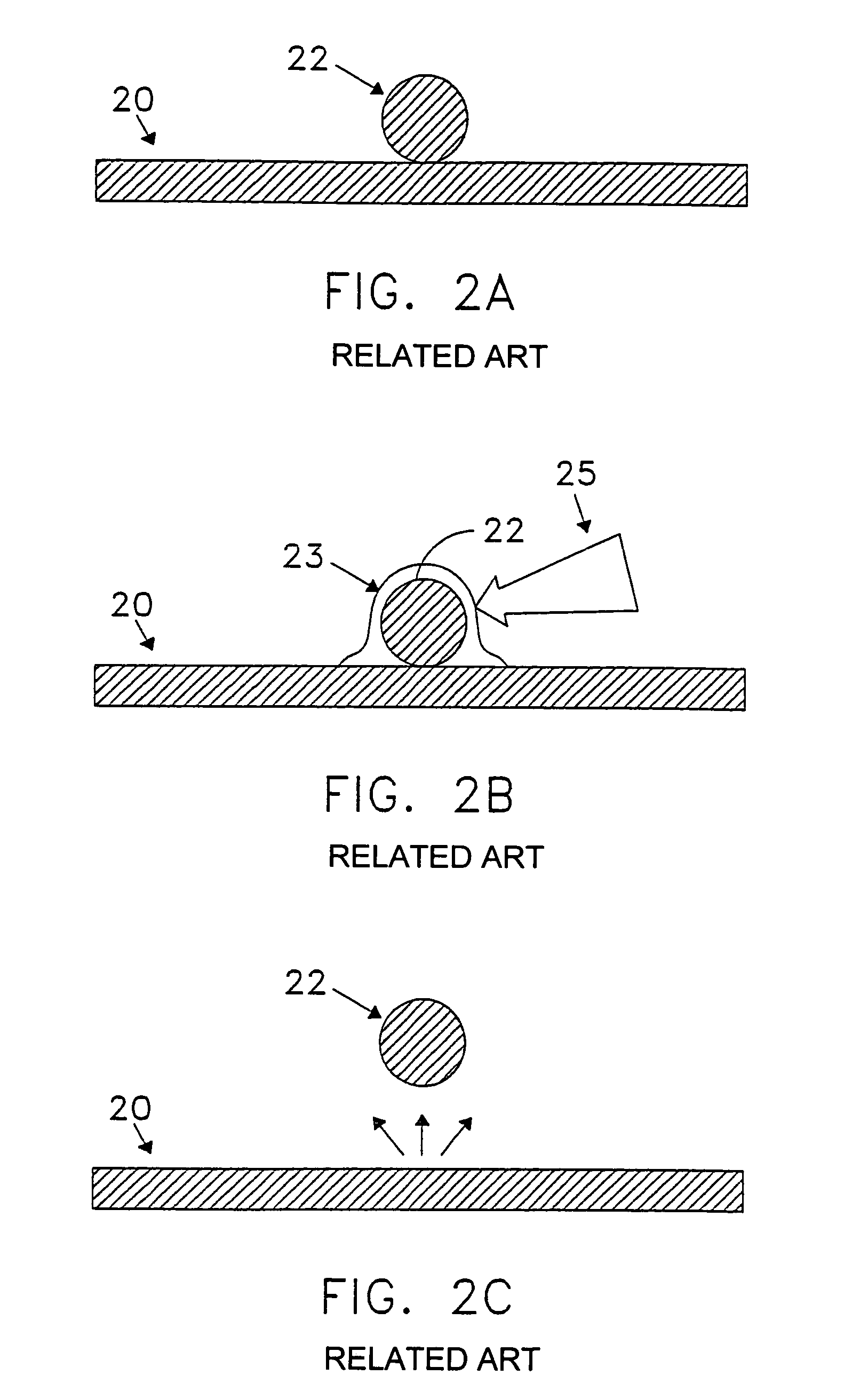Apparatus for removal of minute particles from a surface using thermophoresis to prevent particle redeposition
a technology of thermophoresis and surface removal, which is applied in the direction of cleaning using liquids, instruments, manufacturing tools, etc., can solve the problems of contamination that can be a very significant problem, local heating and possible damage, and particle contamination of surfaces
- Summary
- Abstract
- Description
- Claims
- Application Information
AI Technical Summary
Benefits of technology
Problems solved by technology
Method used
Image
Examples
Embodiment Construction
[0026]Co-pending U.S. application Ser. No. 09 / 909,993, which is hereby incorporated by reference, discusses and proposes methods and apparatus that efficiently remove minute particles from the surface of a substrate. The methods and apparatus according to the invention of Co-pending U.S. application Ser. No. 09 / 909,993 overcome the shortcomings of the prior art. However, as discussed above, one of the challenges of LAPR and other particle removal methods is keeping the particles from redepositing on the surfaces, particularly for very small (for example, micrometer and nanometer size) particles that are not significantly affected by gravity.
[0027]As previously discussed, FIG. 1 shows, in cross-section, a portion of a substrate 20 bearing contaminant particles 22 which are adhered to a surface 21. The particles 22 are bound to the surface 21 by any of a number of forces. The particles are deposited usually by a complex process which may include diffusion, sedimentation, inertia, and ...
PUM
| Property | Measurement | Unit |
|---|---|---|
| size | aaaaa | aaaaa |
| size | aaaaa | aaaaa |
| pressure | aaaaa | aaaaa |
Abstract
Description
Claims
Application Information
 Login to View More
Login to View More - R&D
- Intellectual Property
- Life Sciences
- Materials
- Tech Scout
- Unparalleled Data Quality
- Higher Quality Content
- 60% Fewer Hallucinations
Browse by: Latest US Patents, China's latest patents, Technical Efficacy Thesaurus, Application Domain, Technology Topic, Popular Technical Reports.
© 2025 PatSnap. All rights reserved.Legal|Privacy policy|Modern Slavery Act Transparency Statement|Sitemap|About US| Contact US: help@patsnap.com



